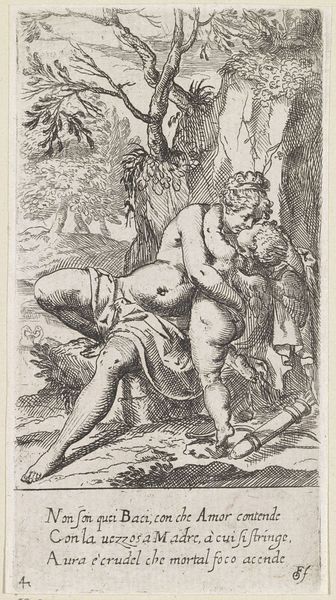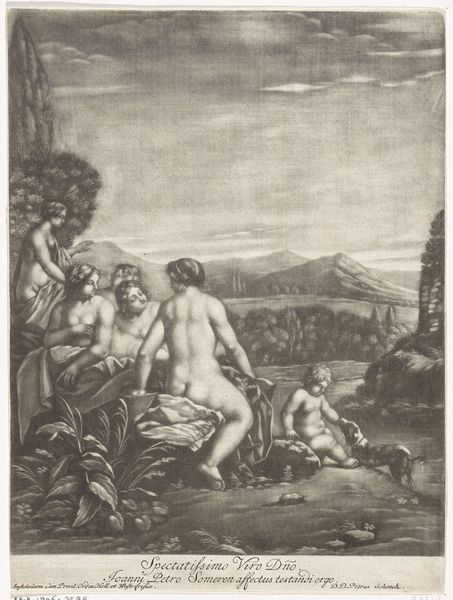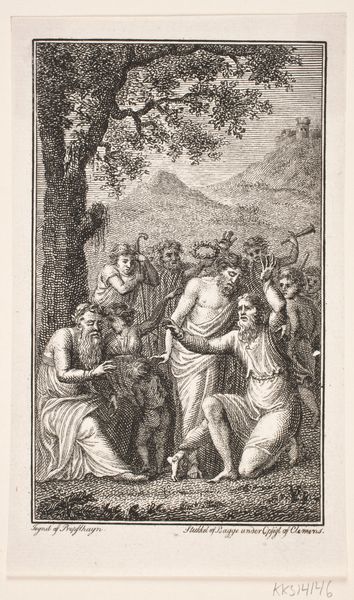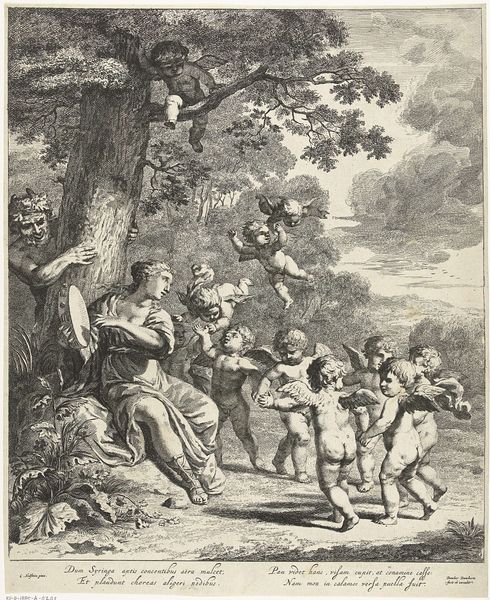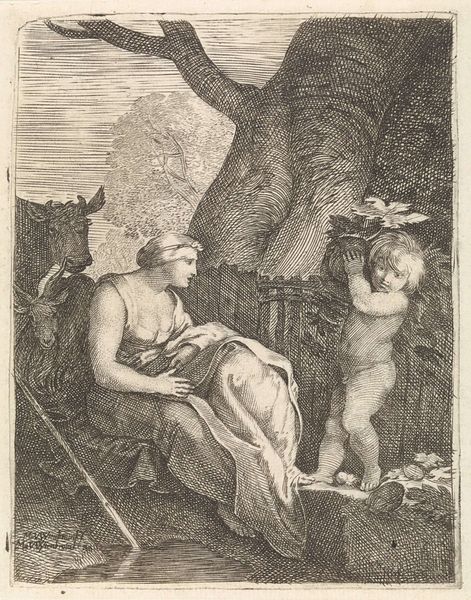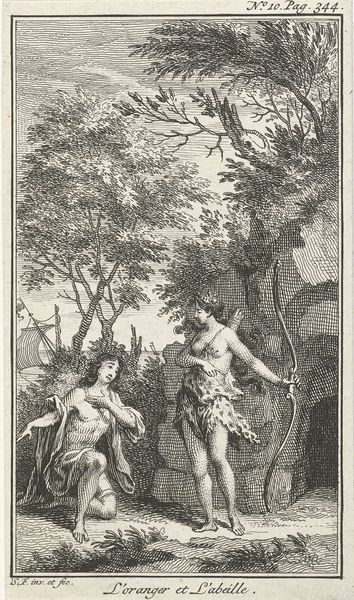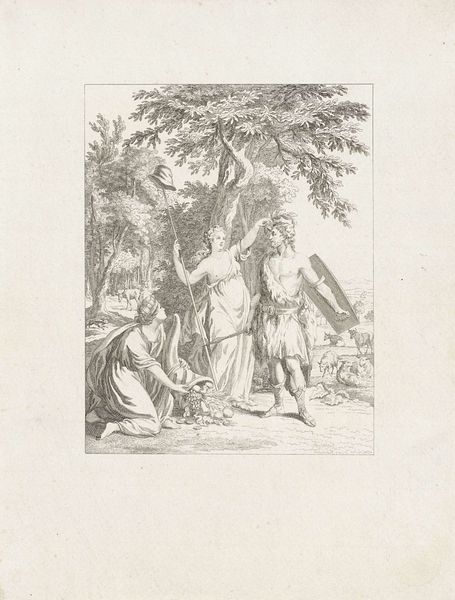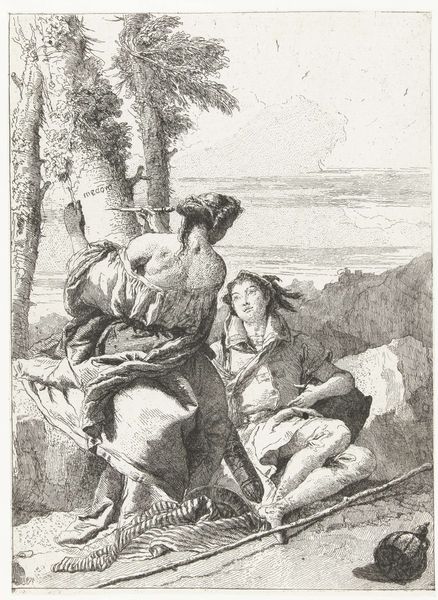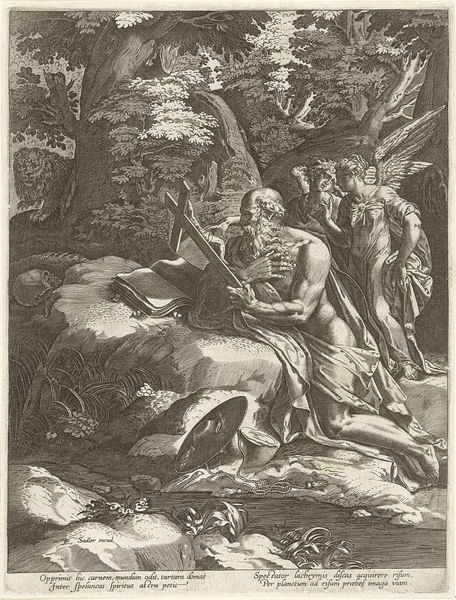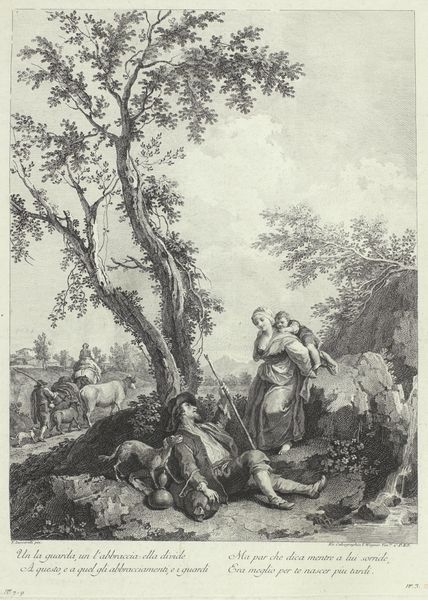
etching
#
baroque
#
etching
#
landscape
#
figuration
#
genre-painting
Dimensions: height 302 mm, width 197 mm
Copyright: Rijks Museum: Open Domain
Curator: Immediately striking, isn't it? The crosshatching in Giovanni Domenico Tiepolo’s "Riviergod en twee jonge mannen en putto op oever," created sometime between 1748 and 1752, lends a nervous energy to the scene. I am so curious about what that implied nervousness may tell us. Editor: Yes, there is an undercurrent to this landscape with figures! But I'm immediately drawn to the materiality. As an etching, the marks, the bite of the acid, the paper itself—all create a distinct tactile quality. The composition too; so much action crammed into one small, detailed space. How large is the actual etching? Curator: Surprisingly intimate; roughly 20 by 30 centimeters. Let's focus for a moment on the figures. We have this almost classical river god, but he’s oddly melancholic. He contrasts with the youthful energy of the men and putto beside him. What about those relationships resonates, do you think? Is he nostalgic? Defeated? Editor: Well, consider the Baroque context! The church, still holding a strong sway, encouraged didactic art, art to teach, not necessarily empower the working population. What sort of printing press would have produced this, how was it distributed? Because this process speaks volumes about cultural consumption at the time and who had access to this river god’s narrative. It could also be allegorical commentary on shifting power, where old river gods give way to youthful energy. The choice of etching itself could even point towards accessibility, a medium capable of reproduction and distribution, making art more democratic! Curator: A crucial observation. The symbols are interesting in light of this diffusion: the cornucopia-like jug, the laurel, the god’s forlorn gaze...they read one way to the wealthy patron but perhaps convey an entirely different message, of abundance and the cost of luxury, to the artisans replicating this image. It carries cultural weight depending on the beholder. Editor: Precisely! And thinking about the etching process—the manual labor of the artist and the potential for multiples changes its cultural value in that historical setting. Did the working classes, faced with rising markets and more access to disposable items, actually interpret this landscape as a commentary on luxury and nature? Perhaps they just sought the entertainment and fantasy the picture held! Curator: Food for thought indeed. The beauty of diving into artworks like this is in unpacking these varied perspectives and not only questioning, but reflecting on how the image can persist over centuries and the multitude of perspectives with which one may view the work! Editor: And that examination should encompass every aspect: the line, the materials, the labor…all of that creates what we experience.
Comments
No comments
Be the first to comment and join the conversation on the ultimate creative platform.

